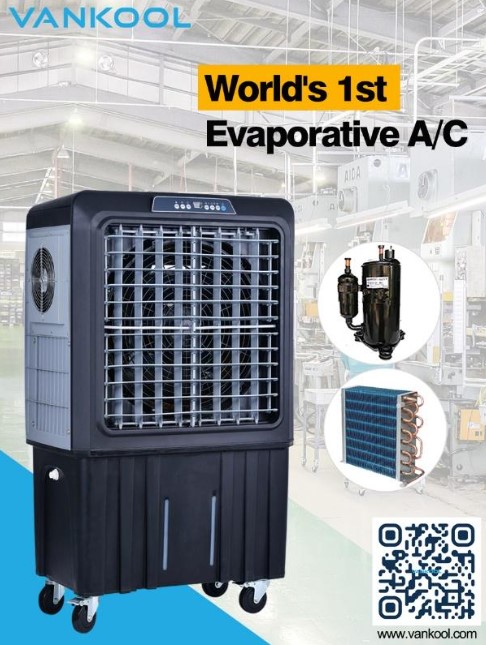
In the realm of climate control and cooling systems, the evaporative air cooler stands as a pioneering innovation, offering an eco-friendly and cost-effective alternative to traditional air conditioning units. This advanced cooling apparatus operates on a principle deeply rooted in nature’s own mechanisms, harnessing the power of evaporation to produce a cooling effect.
Evaporative air coolers, also referred to as swamp coolers or desert coolers, function by drawing in warm air and passing it through moistened pads. These pads contain water, which facilitates the evaporation process. As the air comes into contact with these damp pads, heat is absorbed, and the air temperature decreases significantly, resulting in a refreshing and cooler airflow.
One of the most remarkable advantages of an evaporative air cooler lies in its energy efficiency. Unlike conventional air conditioners that rely on refrigerants and compressors, these coolers utilize a simple yet effective mechanism that consumes notably less electricity. By relying on the natural process of evaporation, they minimize energy consumption, making them an environmentally conscious choice.
Moreover, the operational cost of an evaporative air cooler remains substantially lower than that of traditional air conditioning systems. The reduction in electricity usage translates to cost savings for homeowners and businesses alike, making it an appealing option for those seeking economical cooling solutions.
The design of an evaporative air cooler is structured to be environmentally friendly, emitting fewer greenhouse gases compared to standard air conditioning units. With no ozone-damaging refrigerants or chemical emissions, these cooling systems align with sustainability goals, promoting a cleaner and greener environment.
One notable feature contributing to the effectiveness of evaporative air coolers is their ability to increase humidity levels in dry climates. Unlike air conditioners, which can often exacerbate dryness, these coolers add moisture to the air, providing relief in arid regions while maintaining a comfortable indoor atmosphere.
The functionality of an evaporative air cooler extends beyond its cooling capabilities. These units offer versatility in their installation, being well-suited for both indoor and outdoor use. They are particularly beneficial in spaces where traditional air conditioning might be impractical or excessively costly.
The mechanism driving the cooling process in an evaporative air cooler involves a fan that draws warm air through water-saturated pads. The air absorbs moisture as it passes through these pads, causing a drop in temperature before being circulated back into the environment, creating a pleasant and refreshing atmosphere.
Maintenance of an evaporative air cooler is relatively straightforward, requiring routine cleaning and pad replacement to ensure optimal performance. This simplicity in upkeep contributes to its appeal, reducing the need for intricate servicing common in traditional air conditioning systems.
Conclusion
The evaporative air cooler presents itself as a commendable innovation in the realm of cooling technologies. Its eco-friendly operation, energy efficiency, cost-effectiveness, and adaptability make it a compelling choice for individuals and businesses seeking sustainable and efficient cooling solutions. Embracing the principles of nature’s evaporation, these coolers pave the way for a cooler, greener, and more comfortable future.
